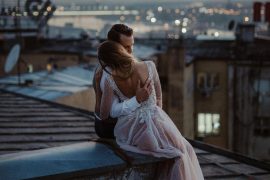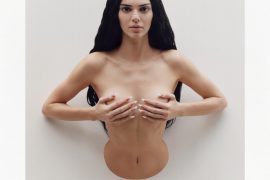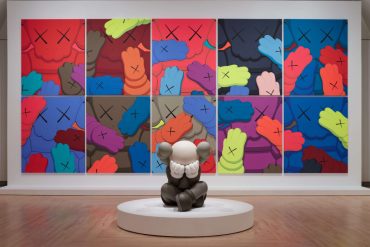A conversation with ART SG Advisory Group member Jehan Chu on art collecting and the rise of NFTs.
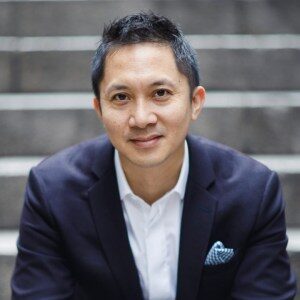
Jehan Chu
I wouldn’t say I am a big NFT collector, because I don’t collect NFTs for the sake of collecting NFTs. Rather, I would say I am an art collector, who’s expanded my collection to include NFTs.
Clara Che Wei Peh: “Can you tell us about your ‘former life’ as an art advisor, and how you got into crypto?”
Jehan Chu: “I started my career as a front-end developer, then I was hired by Sotheby’s to help build their online auctions. In 2006, they moved me out to Hong Kong to help expand the office. This was right during the Chinese contemporary art boom, so I really had a front seat in experiencing the growth of this emerging art category. That was when I started to collect personally. I also started supporting the non-profit art scene. I was invited to be on the Board of Para Site, I supported Asian Art Archive and frequented many other smaller organisations’ events. My experiences in the non-profit scene was really my art education, it gave me a counterpoint to the commercial side that I saw in the galleries and auction houses.
I became an art dealer in 2008 and I did that for about eight years. I didn’t really know how to be a dealer, but I liked art, I had been collecting art and I knew how to sell art. I had friends who were interested in collecting and they felt I had a pretty good eye.
In 2013, I got into Bitcoin. I began investing in different crypto assets, supporting the ecosystem and building up the Ethereum community. The rest is history. I went full-time in crypto in 2016. And that is where I am now – I run Kenetic Capital, where I am the managing partner.
I got into NFTs through crypto, which has brought me back to the art world. It is interesting that I re-developed this relationship with art, which had been a little dormant for the past few years, although I continue to collect and support the non-profit side of the art scene. It’s nice to have this new energy, to look at art from a new lens and to be able to lobby and campaign for art again.”
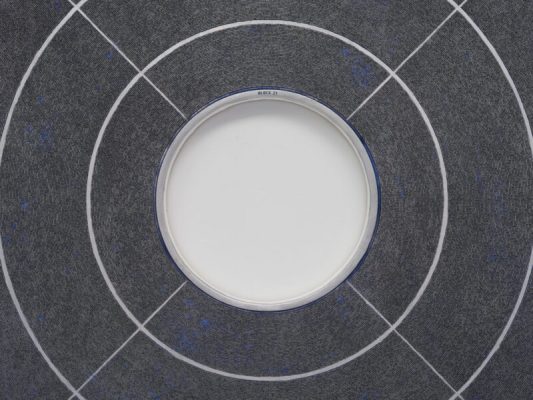
© Robert Alice, Block 21 (42.36433° N, -71.26189° E) (from Portraits of a Mind), 2019. Courtesy of Jehan Chu
CP: “How did you start collecting crypto art and NFTs?”
JC: “It took me a while to pay more attention to crypto art, because I wasn’t seeing things that I was personally interested in. I am much more into fine art, whereas I was seeing a lot of street art and design in the crypto art scene. When Beeple came around, there was a lot more interest and attention paid to and I started to look closer.
My first NFT was very early, it was when Kenetic invested in Decentraland, a blockchain-based virtual world, back in 2018. I also bought a few Crypto Kitties during the craze – I actually bought Vitalik [Buterin] his first Crypto Kitty!
But it was Benjamin Gentilli, the artist behind the Robert Alice project, who really got me into NFTs. He had approached me online to talk about his project. I started to investigate and decided to support him, introducing the work to some of my crypto friends to collect as well. This was the first NFT I collected personally. That led to the Robert Alice auction at Christie’s [Block 21 (42.36433° N, -71.26189° E) (from Portraits of a Mind), auctioned in October 2020], which performed very well. After that, people began to reach out to me as one of the few people that was both deep crypto and deep fine art. Beeple reached out to me as well. We stayed in touch to this day and have collaborated closely on projects.
After Robert Alice, I started buying NFTs from Beeple, Refik Anadol, Mieke Marple from Night Gallery and Ever Gold Projects, Kyle Gordon and a few others. I wouldn’t say I am a big NFT collector, because I don’t collect NFTs for the sake of collecting NFTs. Rather, I would say I am an art collector, who’s expanded my collection to include NFTs.
Now I work on both sides, just as a hobby, to help traditional collectors get into NFTs and help crypto NFT collectors understand more about fine art. I am just hoping to bridge these two worlds. Not just on the commercial side, but also on the curatorial side. We’re collaborating with Serpentine Galleries, and there are a few other institutions that are coming up and getting involved as well.”
© Andy Warhol, Untitled (Flower), executed circa 1985 and minted in 2021. Courtesy of Jehan Chu
CP: “What is in your collection, both physical artworks, as well as those collected as NFTs?”
JC: “I primarily collect contemporary art and a little bit of modern art. I have aesthetics and I have interests, but I wouldn’t say I had a singular collecting focus.
For example, I was bidding on a Martin Wong work in a recent auction, he’s an artist I have been buying and collecting for my clients even back in 2013 or 2014. I think he’s great, although I did not win the auction. But here on my desk, I have this really beautiful Martin Wong calligraphy, called Stone Steps Fall. I was also bidding on Chris Huen, a Hong Kong painter. In front of my desk, I have this work by another Hong Kong artist, Kong Chun Hei. He was really into video games and so he kind of reconstructs landscapes with a video game-inspired aesthetic. I find that I am more and more drawn to plants and flowers, I am somehow very attracted to abstract botanical scenes. I also collect Richard Lin because I think he is an important artist, I really like his story. I am a huge supporter of the King of Kowloon, Tsang Tsou Choi, as the first street artist and I just think that his story his practice represents a collective memory of Hong Kong.
I also follow gallerists, to some degree. I like a lot of artists with Take Ninagawa, like Shinro Ohtake, Danh Vo, Ryoko Aoki and some others. I also like the works that come out of Galerie Chantal Crousel, as well as Pilar Corrias Gallery.
I have works from all over the place. I have one of Hiroshi Sugimoto’s photographs. But then I also collect Federico Herrero, a Costa Rican self-taught painter. His works are deceptively simple, very sophisticated in his use of composition and colour. There’s also Kelly Akashi, a very talented artist working with glass and bronze. I collect a bit of Chen Tianzhuo as well, whose works really play with the senses, like with operatic performances. So yeah, it’s a super diverse collection, with no particular rhyme or reason.
As for NFTs, I collect Urs Fischer’s works, as well as Beeple’s. I think Beeple’s significance, in terms of bringing NFTs to popular culture and disrupting the art world, cannot be underestimated. I think he is one of the most important artists of this generation, regardless of what people think about the visuals.
Recently, I was also able to win the auction of one of Andy Warhol’s NFTs at Christie’s [Andy Warhol: Machine Made, auctioned in June 2021]. The Warhol flower is an iconic work and a fine example of NFT’s ability to codify digital-native pieces into art history. The digital painting from 1985 is one of the earliest examples of digital art, and will now be preserved forever as an NFT. This artwork is the crown jewel of my 15-years collection, and represents the full expression of my fine art and crypto cultures at their best.”
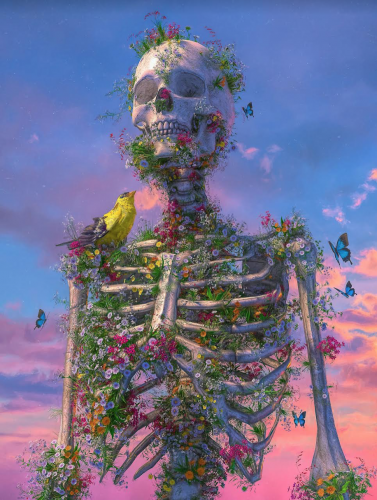
© Beeple, ALIVE (Everydays #5042), 2021. Courtesy of Jehan Chu
CP: “Do you see your physical art collection and NFT collection as part of the same vision, or as two very separate collections?”
JC: “I would say that with my physical collection, I focus more on aesthetics and how the image speaks to me. I find that the older I am, the more I become comfortable with myself as a collector and understand what it is that I like and do not like, I start to become very visually and aesthetically driven. Whereas with NFTs, I give it a bit more latitude. I know that most of these pieces may not have the same physical and visual presence in my day-to-day life, the way that a painting that I am hanging might. I am investigating screens and different displays, but I don’t see it as a big part of my environment yet, in the way that a physical artwork is.
With NFTs, I think more about the history and the significance of the work within crypto history. It was very important, for example, for me to buy the Kings of Leon NFTs for my portfolio company, because it was the first major label album as an NFT. I am not even a fan of the band, but I know this is a significant drop. I grew up with science fiction, fantasy, Dungeons and Dragons, I was a comic book-collecting kid, so Beeple’s works do present an aesthetic I grew up with. I also collect NFTs that are not necessarily my taste, but because they are significant. I think Urs Fischer’s works are beautiful, but there may not yet be many NFT works I find aesthetically interesting. I am sure they are out there, maybe I just have not seen them.”
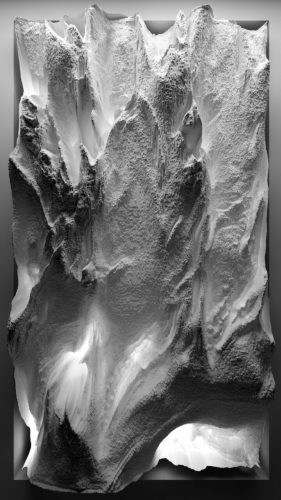
© Refik Anadol, MACHINE HALLUCINATIONS: MARS LANDSCAPES – Collector’s Edition #26/30, released in 2021. Courtesy of Jehan Chu
CP: “What are the different qualities of an NFT that makes it significant?”
JC: “From the quantifiable aspects, you have to consider editions. I think animation is also important. I haven’t seen too many static works that can really have the same impact as animated works in NFTs. There are ways to think about generative art with NFTs that I think are important. Daniel Arsham just did a work that has a reconfigurable or generative aspect to it and I like how people are exploring these possibilities with NFTs.
On the other hand, I have seen video works as NFTs that are quite good. I am a huge fan of Refik Anadol, his kind of AI generative works. Although the NFTs themselves are not yet generative, I am sure he will make his way towards it. He contributed a work to the Carbon Drop sale [by the Open Earth Foundation on Nifty Gateway, March 2021] that was about machine hallucinations, where he fed around 4 million images of landscape that people had taken, to teach the machine how to create landscape based on impressions and ideas of what landscape could look like.
From the qualitative aspect, personally I am less interested in anime, street art and graphic illustration. I feel like there is no reason why these works need to be NFTs, other than presenting a way for me to collect them, which is perfectly fine, but it is just not what I am drawn to. I would love to see more contemporary artists really considering the digital medium, and supporting themselves through NFTs. I think it’s a shame that David Hockney has come out against NFTs, because his iPad drawings are the most ready to be NFTs. I would buy them in a second.
I am most interested in NFTs that really carry a historical importance, or look to bring us to new frontiers. I am looking for works that are committed to the medium. I really want to collect artists who are being innovative and thoughtful, and not just publishing in NFTs.”
CP: “How do you foresee NFTs will interact with the larger art world in the near future?”
JC: “I think NFT art will become an even larger part of the art world. NFTs have already broken through the price gate and are beginning to establish a presence in galleries. Gallerists like Johann Koenig, Ever Gold Projects are already working with NFTs. Pace Gallery is going to be dropping the next session of Urs Fischer, I’ve heard there is already a massive waitlist for them. I think the next thing we can look forward to is a major museum show, which, I’m sure, is already in the works somewhere. Another barrier NFTs will break through would be having a major traditional collector coming out for NFTs.
I also think that, fundamentally, improving the experience of living with or displaying NFTs is quite important. I think that’s a tougher nut to crack. It has to be more than simply displaying them on screens, that just doesn’t occur to me as a very compelling experience. It’s the same challenge for collecting digital art or time-based media. I think it has to be an experience that marries both the physical and the digital. We will just have to wait and see.”
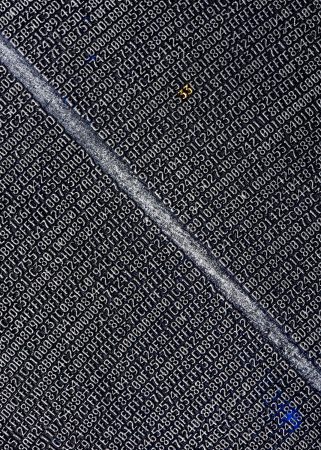
© Robert Alice, Block 21 (42.36433° N, -71.26189° E) (from Portraits of a Mind), 2019. Courtesy of Jehan Chu
CP: “The biggest platforms in the art world, such as Christie’s and Sotheby’s, are now increasing their coverage of NFTs. What are your thoughts regarding their curation and the works they are choosing to highlight?”
JC: “Full disclosure, I am the crypto advisor to Christie’s globally and I advise them on things that I look at and find interesting. I have to say, my hat’s off to Christie, because they were the first to really break this open with the Robert Alice piece, where we had attached an NFT to a physical work. That was the first NFT to be sold at a major auction house. I think it paved the ground for Beeple, as Christie’s saw how well NFTs could perform at auction. I said to them, you know, there is so much wealth in crypto, and when you get rich, you buy local. NFTs are local to the crypto communities. From there, they expand out to buy more art. We’re seeing that now, with Pablo Fraile buying Elizabeth Peyton and Justin Sun buying Warhol and Picasso.
Sotheby’s and Phillip’s are doing a lot in this space as well, and I think that is all great. But at the end of the day, auction houses are marketplaces, not curators. They can curate auctions, but an auction is functional, whereas exhibitions do not have to be. Ideally, I would like to see more education done on the part of the auction houses to their auctions, to really educate the public about NFTs and crypto art, beyond selling the works.
I think we saw with Chinese contemporary art sales in 2006 to 2008 or 2009, that the auction houses were seen as the de facto curators of the space, because global institutions had not caught up to this space. The auction houses got there first, and were selling Zeng Fanzhi, Zhang Xiaogang, but they also sold a lot of works that were not so interesting. There was a lot of noise in the market. At the end of the day, when the bottom fell out of the market, or the interest waned, a lot of people lost a lot of money because they overpaid for things that could not stand the test of time.
And that’s what we are seeing with NFTs. A lot of stuff is being sold by the auction houses, as well as by the Nifty Gateways, by the MakerPlaces, by the Foundations, by the OpenSeas. But there’s no curation. And there’s no education and criticality in the space. So I think, because auction houses have this influence, they should wield it, and take on more responsibility to teach people how to look at these things, not just how to buy them.”
CP: “What advice would you give to a new NFT art collector, especially one whose background is in collecting fine art?”
JC: “I would say, for new collectors, you don’t have to start so far afield. You can start with the artists that you already know, who are making NFTs. That is probably a more comfortable transition. Because a lot of the NFT artists come from illustration and design backgrounds, and it can be very different from contemporary art. So you may not be so drawn to those aesthetics. But don’t throw the baby out with the bathwater.
The challenge is that you must have the patience to sift through all of the noise, to get to the works that are important. And that’s really hard in the early days, you got to do the work. You can’t just show up to an exhibition and think, oh, this sucks. You have to understand – well, why don’t I like it? And what else is there? Where are we in the continuum of this development of fine art in the NFT space? It’s a new market, and that’s what happens in new markets.
There needs to be a support mechanism to facilitate people to have a route into the NFT space. If nobody supports the NFT space in this early stage, then it will go a different direction. But if people who understand fine art, and are committed can believe that this is a valid medium, and that there is no version of the future where NFTs are not going to be important, then now is the time to be influential. To be constructive, and not just consumptive.”
Via PHOTOFAIRS




